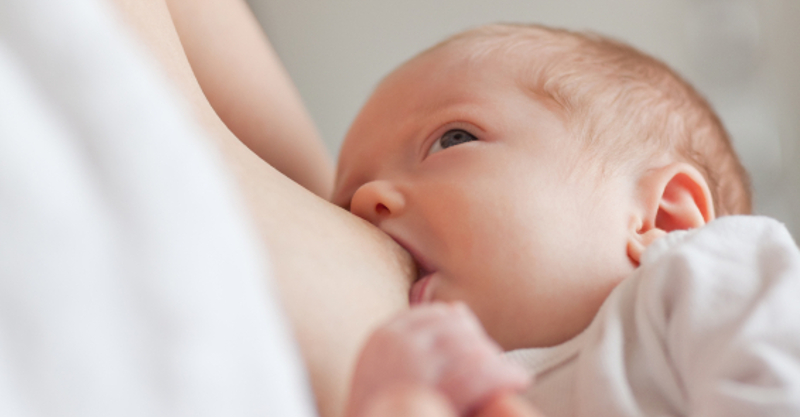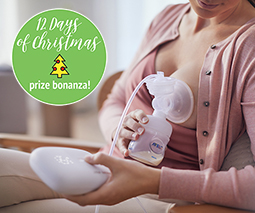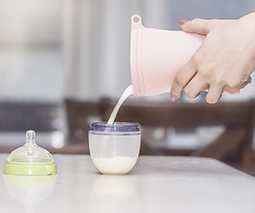Mastitis – the breastfeeding hurdle that’s much more than just a pain in the boob

Mastitis is the ultimate slap in the face for a new mum. Exhausted, emotional and learning on the job, being a mum is hard work. You try your best to give this breastfeeding thing a go and BAM – mastitis. As if you didn’t already have enough to worry about, your boobs have other ideas and clog themselves up, leaving you very sore and sorry. But armed with the know-how you might just be able to fix it, and avoid a second bout.
Mastitis is usually the result of a blocked milk duct that hasn’t cleared. Some of your breast milk banked up behind the blocked duct can be forced into nearby breast tissue, causing inflammation and sometimes infection. Left holding a hungry baby who still needs to be fed, it can be agonisingly painful.

The Royal Women’s Hospital says the reported incidence of mastitis varies from 10 to 20 per cent of women in the first six months after having a baby. Most episodes of mastitis occur in the first eight weeks postpartum, but mastitis can occur at any time during breastfeeding.
Like any new mum, Sydney mother Candy Wu wasn’t aware the pain mastitis could cause until she came down with symptoms three days after the birth of her daughter Marley.
“I got it the first time on day three but was told it was way to early to be mastitis,” Candy tells Babyology.
“I had the shivers, but got told it was milk fever. I took myself to the GP and was put on antibiotics straight away.”
But it wasn’t problem solved – days later complications meant Candy was rushed to hospital and spent seven days there with her baby.
“I was getting my breasts drained with a syringe every second day and balled my eyes out at every feed (because of the pain),” she says.
“The best thing for it is to keep feeding though. But I have no concept of how good it feels to be a first-time mum.”
Candy says “being stubborn” put her in hospital, but being stubborn has kept her breastfeeding Marley, who is now 11 months old.
“My biggest piece of advice is to attend breastfeeding classes and have a network. Don’t push through any horrible feelings like that’s the way you’re supposed to feel,” she says.
The Australian Breastfeeding Association warns that early symptoms of mastitis can make you feel as if you are getting the flu. You may begin to get shivers and aches – but some mothers who do not have any early signs of a blocked duct can get mastitis out of the blue.
The association says that the breast will be sore like it is with a blocked duct – “only worse”.
“It is usually red and swollen, hot and painful. The skin may be shiny and there may be red streaks,” advises ABN.
“You will feel ill. It is common for the ill feeling to come on very quickly.”
Start treatment as soon as you feel a lump or sore spot in your breast and seek medical advice if it doesn’t improve in a few hours.
Drain the breast often, but gently
Your breasts need to be kept as empty as possible and baby’s sucking is the best way to do this. The milk is quite safe for your baby to drink.
Feed more often than usual, starting each feed on the sore breast. Let your baby suck long enough on this side to make sure that it is being drained well. However, take care not to let the other breast become too full, as it may cause a similar problem in that breast.
Make sure your bra is very loose or take it off, relax while you feed, breathe deeply and change feeding positions to allow the milk to flow down to your baby.
Gentle pressure behind the lumpy area may help move the blockage.
Apply warmth and cold
Using cold packs on the affected breast can help reduce swelling and relieve pain.
Using warmth (shower, heat packs) only sparingly and just before a feed can help trigger your let-down to help clear the blockage and may relieve pain.
Rest
Getting rest when you have mastitis is vital. Stay in bed or at least put your feet up for most of the day. If you do go to bed, take your baby, nappies and your own food and drinks with you.
Seek medical advice
Consult your doctor if you have a fever, feel unwell or if you cannot clear a blocked duct after 12 hours.

Ensuring your baby is attaching well to your breasts and feeding well is the best way to prevent mastitis. Other advice includes to breastfeed your baby as often as your baby wants to feed, avoid putting off or missing feeds and wake your baby for a feed or express a little if a breast becomes uncomfortably full.
Alternate from which breast you begin each feed to ensure at least one breast gets drained well at every second feed.
Mums with an oversupply may also have problems with blockages if they aren’t managing their supply well. See a lactation consultant if you have too much milk, as they can help with a feeding plan to help control your milk production.
Take a look at how a Singapore mum-of-two captured breastfeeding photos that stand against workplace discrimination, sticking up for working mums who need to pump milk to keep up supply and avoid mastitis once back at the office.









